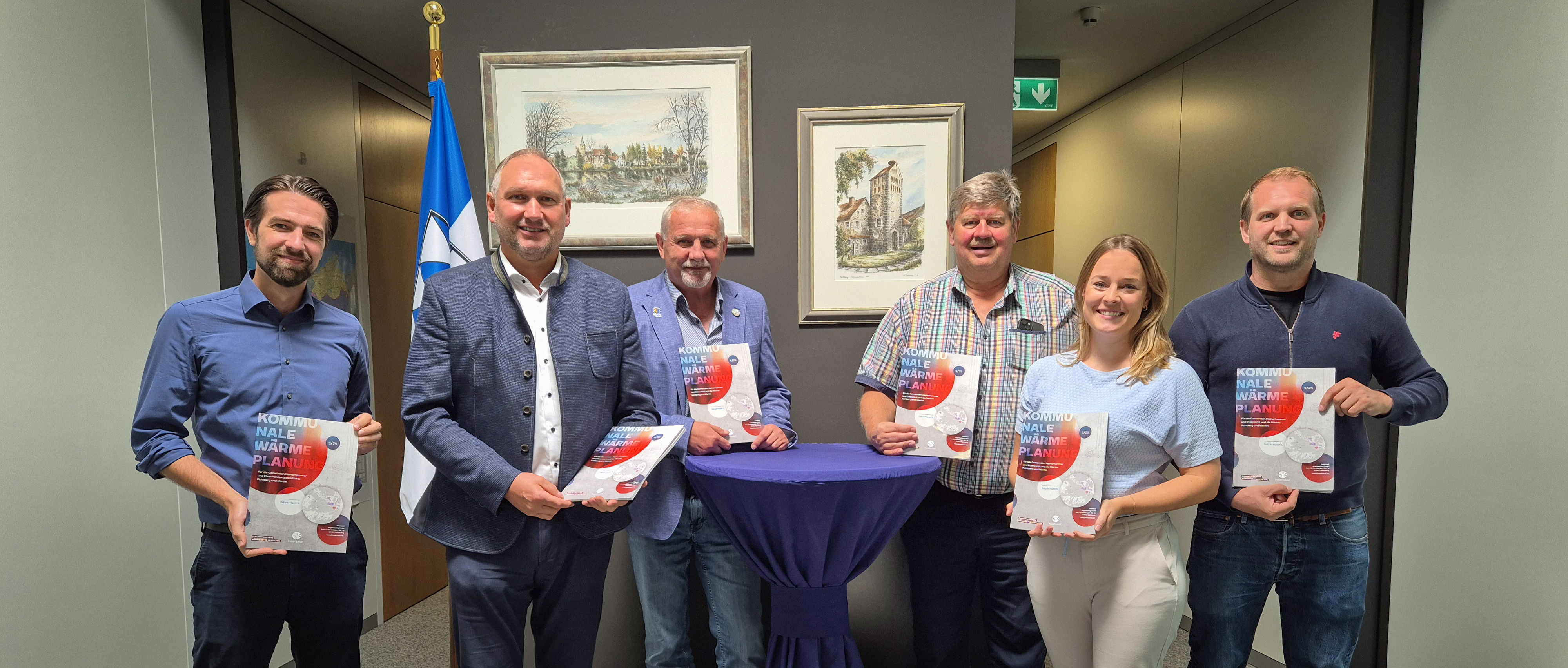Completion of municipal heating planning for Weiherhammer and Mantel
After months of intensive work, analysis and coordination, the time had finally come: together with our project partner Bayernwerk, we were able to officially hand over the municipal heating plan for the municipalities of Weiherhammer and Etzenricht as well as the markets of Kohlberg and Mantel to the mayors of the four participating municipalities. The on-site meeting in Weiherhammer was an important moment to look back on the project and at the same time look ahead to the future.

A project with vision
The heating plan is much more than just a document to fulfil legal requirements. It is a strategic roadmap that shows how the heating transition can be successfully implemented in the participating municipalities. Based on detailed data analyses, potential studies and scenarios, we have worked with Bayernwerk and the four municipalities to develop concrete measures that pave the way for a climate-neutral heating supply.
It is also particularly noteworthy that the three municipalities of the Weiherhammer administrative community and the neighbouring market town of Mantel have joined forces to form a convoy for municipal heat planning. This joint approach to heat planning enabled us to consider the potential for renewable heat sources beyond the boundaries of the individual locations and find a holistic solution for all four municipalities.
The focus was on the following questions:
- How can we secure the heat supply in the long term and at the same time make it climate-friendly?
- What potential do renewable energies and local waste heat sources offer?
- What investments are necessary and how can they be implemented efficiently?
The heating plan provides answers based on the specific local conditions, from the geological requirements for the use of geothermal energy to the requirements and potential of local businesses. To this end, a total of 1,404 questionnaires on the building stock were submitted by citizens and evaluated by us. We were then able to derive nine specific measures. We were able to integrate specific preliminary planning results into the heating plan, particularly for areas that are promising for new heating networks.
The final meeting – review and outlook
At the meeting with the mayors and our project partners, we not only presented the final heating plan, but also reflected together on the following:
- What went particularly well? The close cooperation between all parties involved and the openness to innovative approaches were highlighted several times. In addition, a survey of the building stock enabled us to compile a high-quality database.
- Where are there still challenges? Above all, implementation now requires clear priorities and close coordination between all parties involved.
Looking ahead was particularly important: the heating plan is not an end point, but the starting signal for implementation. Initial steps such as the promotion of heating networks and the involvement of local companies were discussed.
An important step for the heating transition
The heating transition is a central component of the energy transition – and it is taking place at the local level. With the heating plan, municipalities now have a tool at their disposal that not only meets legal requirements but also opens up real prospects for action. For us, it is clear that the transformation can only succeed in cooperation with local authorities, citizens and local stakeholders.
Our conclusion
We are proud of what we have achieved and grateful for the constructive cooperation. The completion of this project shows that with clear goals, sound analysis and a strong network, great strides can be made towards climate neutrality. We look forward to shaping the next stages together.



